Are you ready to embark on a journey toward a healthier, stronger, and more balanced body? If so, you've come to the right place. Creating a full-body workout routine is an art that requires careful planning, thoughtful consideration, and a deep understanding of your body's needs.
Whether you're a fitness enthusiast looking to revamp your exercise regimen or a beginner eager to kickstart your fitness journey, this guide will be your ultimate blueprint for crafting the perfect full-body workout routine.
The beauty of a full-body workout routine lies in its ability to engage multiple muscle groups simultaneously, enabling you to maximize your workout time and efficiency.
Targeting various muscle groups in a single session builds strength, enhances endurance, boosts metabolism, and promotes overall functional fitness. However, creating a well-rounded routine that optimally challenges your body while avoiding pitfalls requires careful consideration of several vital factors.
This guide will explore the fundamental principles of designing a perfect full-body workout routine, considering individual goals, fitness levels, time availability, and personal preferences.
We will delve into effective workout programs, ensuring that every exercise, set, and rep count is strategically chosen to yield the best results. Additionally, we will discuss the importance of incorporating both resistance training and cardiovascular exercises to achieve a balanced and comprehensive routine.
Related Article: No More Steroids - Pack on Serious Muscles With These 5 Full Body Workouts
Assessing Your Fitness Level
How to create the perfect full-body workout routine for beginners? This is one of the common questions that we hear. Creating the perfect full-body workout routine can seem daunting, especially for beginners who have never stepped foot in a gym.
However, assessing your fitness level before jumping into a plan is critical to success. Determining your fitness goals is an essential first step, giving you a clear idea of what you want to achieve.
From there, evaluating your current fitness level can help you establish a starting point for your full-body workout plan for beginners.
It's essential to consider any specific limitations or injuries that may affect your ability to exercise, as this can help you tailor your full-body workout routine to your individual needs. By creating a plan that considers your fitness level and goals, you'll be able to achieve the perfect full-body workout routine.
A perfect quote on a full-body workout routine comes from Arnold Schwarzenegger:
"You have to remember that your muscles respond not only during exercise but also after exercising. So you have to give them enough time and rest in order for them to recover and grow. Train hard, but at the same time, listen carefully to what your body tells you because it will tell you when something isn't working properly or when it needs more rest." ~ Arnold Schwarzenegger
This quote perfectly sums up the importance of giving your body and mind adequate rest while engaging in a full-body workout routine - pushing too hard without proper recovery periods can do more harm than good!
Designing Your Workout Routine

Do you need help designing the perfect full-body workout plan for beginners? Look no further! Creating a practical workout routine can be challenging, especially when starting. It's essential to consider your fitness goals, time constraints, and personal preferences when designing your workout plan.
To maximize your results and stay motivated, you'll need to strike a balance between strength training and cardiovascular exercise.
Building your routine around stretching exercises, resistance training exercises, core exercises, and cardiovascular exercises will help you work multiple muscle groups at once.
Remember to start slowly and gradually increase the intensity of your workout. With dedication and the right plan, you'll be on your way to achieving your fitness goals in no time.
Warm-Up and Stretching Exercises
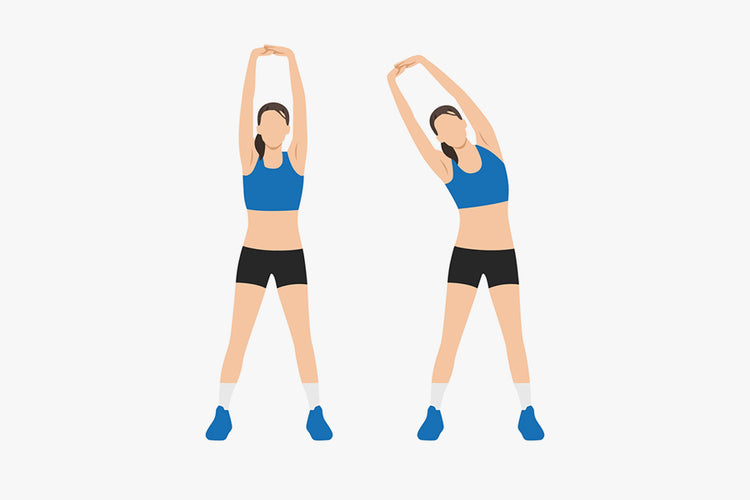
As a beginner, starting a full-body workout plan can be intimidating and overwhelming. However, with the proper guidance and approach, anyone can design the perfect routine that works for their fitness goals.
One crucial aspect is the routine's warm-up and stretching exercise phase. Before diving into any intense workout, taking the time to warm up your muscles and stretch them properly is crucial to avoiding injuries and maximizing your performance.
A good warm-up routine could include light cardio exercises such as jogging, jumping jacks, or cycling, followed by butterfly, hamstring, and tricep stretches. Incorporating these exercises into your routine can help you prepare your muscles for the workout and ensure you get the most out of your full-body workout plan.
Resistance Training Exercises
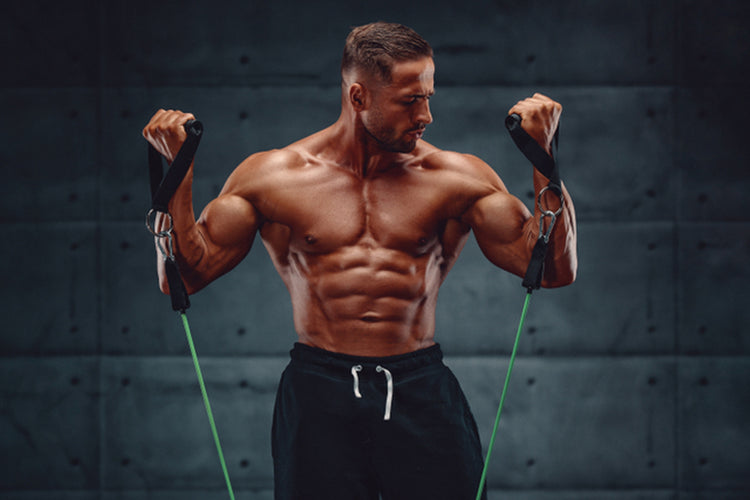
Practical workout routines involve cardio and resistance training, and the right mix of exercises can lead to a perfectly balanced full-body workout. It is crucial to dedicate time to resistance training exercises when designing your workout routine.
These exercises can help build muscle, tone our bodies, and increase bone density. Resistance training exercises can be divided into three categories: upper body, lower body, and core.
By including these resistance exercises in your full-body workout, you'll create a routine that builds strength, enhances your physique, and improves overall wellness.
Upper Body Exercises
Incorporating resistance training exercises is crucial when creating the perfect full-body workout plan for weight loss. Not only do these exercises help build muscle and strength, but they also increase your metabolism and aid in fat loss. Focusing on upper body exercises, such as push-ups, pull-ups, and dumbbell presses, can target the chest, back, shoulders, and arms.
Incorporating various exercises and equipment, such as weights and resistance loop bands for workouts, into your workout routine can challenge your muscles and ensure balanced strength development throughout your entire body.
These DMoose Resistance Loop Bands help fulfill all your training, strengthening, stretching, and upper-body muscle flexibility needs. These top-quality resistance bands offer a pathway to achieving your workout aspirations, whether enhancing overall body strength, aiding in rehabilitation, attaining an ideal physique, or developing a strong core and abdominal area.
With consistency and dedication, a well-designed resistance training routine can help you reach your weight loss goals and improve overall health.
Lower Body Exercises
Resistance training exercises are crucial when achieving a full-body weight-loss workout plan. Focusing on your lower body can also effectively achieve your fitness goals.
Squats, lunges, and deadlifts will help build muscle in your glutes, hamstrings, and quads while increasing your overall strength and endurance. By creating a well-designed workout routine that includes resistance training exercises, you'll be on your way to achieving your full-body fitness goals and shedding those extra pounds.
Core Exercises
Resistance exercises can be a game-changing addition to any full-body workout routine, especially for beginners. And when it comes to a comprehensive workout, core exercises must be included. By building strength in your core muscles with targeted exercises, you'll improve your posture and reduce your risk of injury.
Consider adding resistance exercises and core workouts to create the perfect workout routine. Remember, consistency is vital; starting with a few exercises and gradually increasing the intensity and duration will lead to long-term success. So, find what works best for you and get ready to see results quickly!
Cardiovascular Exercises
Cardiovascular exercises are essential to any fitness routine, benefiting from improved heart health and reduced stress levels. When it comes to choosing a cardio workout, there are endless options to choose from.
Whether you prefer running, cycling, swimming, or simply dancing around the living room to your favorite tunes, the key is finding an activity that you enjoy and gets your heart pumping.
Aim for at least 30 minutes of moderate-intensity cardio exercise most days of the week for optimal results. If you're starting, try going for a brisk walk or jog, gradually increasing your pace and duration. Remember, consistency is key, so find a routine that works for you and stick with it!
Flexibility and Mobility Exercises
Designing a workout routine that suits your needs can be tricky, but incorporating flexibility and mobility exercises can make the difference between a great workout and a strained injury. Flexibility exercises aim to increase your range of motion, while mobility exercises focus on stabilizing muscles and joints to support your movements.
When selecting flexibility exercises, start with gentle stretches such as knee-to-chest or seated hamstring before moving on to more complex full-body stretches. For mobility exercises, try incorporating wall slides or hip bridges to strengthen hip muscles and increase flexibility.
Remember to build up slowly and allow time for rest and recovery. Ultimately, a well-rounded workout routine with flexibility and mobility exercises will lead to a healthier, stronger body.
Cooling Down and Stretching Exercises
After a challenging workout, taking the time to cool down and stretching exercises is crucial. Many people might be tempted to skip these steps and head straight for the shower, but this can be detrimental to your body in the long run.
Cooling down helps bring your heart rate and breathing back to normal, reducing the risk of injury. It's also a great way to increase flexibility and range of motion.
Stretching exercises, on the other hand, helps promote muscle recovery and reduce soreness. Make sure to include 5-10 minutes of cooldown exercises and 10-15 minutes of stretching exercises in your workout routine to boost your fitness journey.
Structuring Your Workout Program
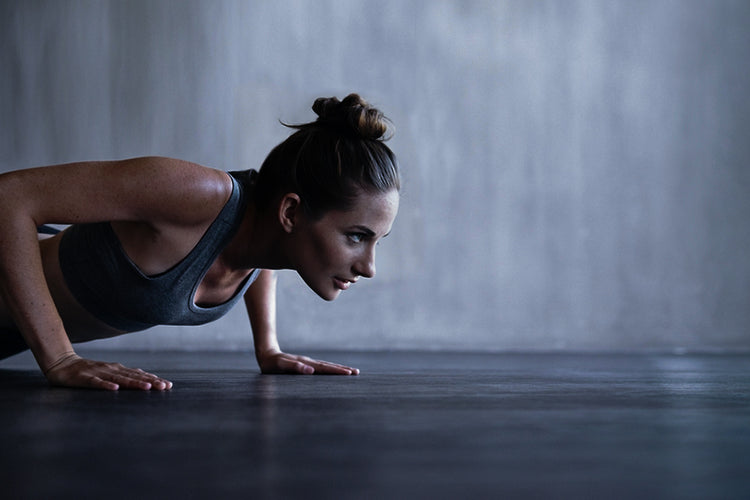
Designing a well-structured workout program is essential for achieving your fitness goals effectively and efficiently. By following a structured approach, you can optimize your time in the gym, target specific muscle groups, and ensure the balanced development of your overall physique. Begin by setting clear objectives, whether building strength, increasing endurance, or losing weight.
Next, determine the frequency and duration of your workouts, considering your schedule and fitness level. Then, divide your routine into cardio, strength training, and flexibility exercises. Lastly, remember to include rest days for recovery and allow your body to adapt and grow stronger. A well-structured workout program will keep you motivated, focused, and on track to your desired results.
Frequency of Workouts
The frequency of your workouts will depend on your fitness level, schedule, and goals. Generally, beginners can start with two to three full-body workouts per week, allowing for rest and recovery in between. You can gradually increase the frequency to four to five weekly workouts as you progress.
|
Exercise |
Targeted Muscles |
Sets and Reps |
|
Quads, Glutes, Hamstrings |
3 x 10-12 |
|
|
Chest, Triceps |
3 x10-12 |
|
|
Back, Biceps |
3 x 10-12 |
|
|
Shoulders, triceps |
3 x 10-12 |
|
|
Back, glutes, Hamstrings |
3 x 10-12 |
|
|
Quads, Glutes, Hamstrings |
3 x 10-12 |
|
|
Back, Biceps |
3 x 10-12 |
|
|
Chest, Shoulders |
3 x 10-12 |
|
|
Triceps |
3 x 10-12 |
|
|
Biceps |
3 x 10-12 |
|
|
Core |
3 x 30-60 sec |
|
|
Abs, Obliques |
3 x 10-12 (each side) |
|
|
Calves |
3 x12-15 |
|
|
Quads, Glutes, Hamstrings |
3 x 10-12 |
Splitting Workouts (Full-Body Vs. Split Routines)
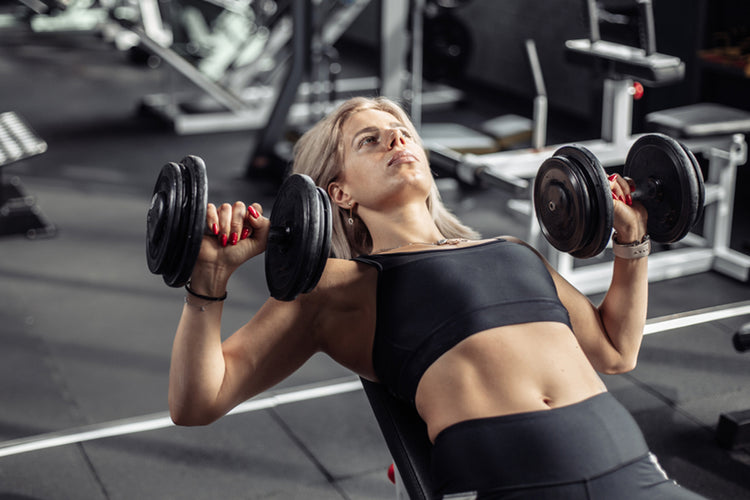
One crucial decision when structuring your workout routine is whether to follow a full-body workout or a split routine. These two approaches depend on your fitness goals, time availability, and individual preferences.
Two main approaches to structuring your workouts are full-body and split routines.
Full-Body Routines
You target all major muscle groups within a single workout session in a full-body routine. This time-efficient approach works well for beginners or those with limited time. It allows for frequent muscle stimulation and overall body conditioning.
|
Day |
Focus |
Exercise |
Reps |
Sets |
|
Monday |
Upper Body |
8-10 |
3-4 |
|
|
8-10 |
3-4 |
|||
|
8-10 |
3-4 |
|||
|
10-12 |
3-4 |
|||
|
10-12 |
3-4 |
|||
|
Hold for 30-60 sec |
3-4 |
|||
|
Tuesday |
Lower Body |
8-10 |
3-4 |
|
|
8-10 |
3-4 |
|||
|
10-12 (each leg) |
3-4 |
|||
|
12-15 |
3-4 |
|||
|
10-12 |
3-4 |
|||
|
12-15 (each side) |
3-4 |
|||
|
Wednesday |
Rest |
Rest |
- |
- |
|
Thursday |
Full Body |
10-12 |
3-4 |
|
|
8-10 |
3-4 |
|||
|
8-10 |
3-4 |
|||
|
10-12 |
3-4 |
|||
|
10-12 |
3-4 |
|||
|
Hold for 30-60 sec |
3-4 |
|||
|
Friday |
Lower Body |
8-10 |
3-4 |
|
|
8-10 |
3-4 |
|||
|
10-12 (each leg) |
3-4 |
|||
|
10-12 |
3-4 |
|||
|
12-15 |
3-4 |
|||
|
12-15 (each side) |
3-4 |
|||
|
Saturday |
Rest |
Rest |
- |
- |
|
Sunday |
Full Body |
8-10 |
3-4 |
|
|
Lat Pulldowns or Pull-Ups |
8-10 |
3-4 |
||
|
8-10 |
3-4 |
|||
|
10-12 |
3-4 |
|||
|
10-12 |
3-4 |
|||
|
Hold for 30-60 sec |
3-4 |
Split Routines
A split routine involves dividing your workouts to focus on specific muscle groups on different days.
For example, you might have a chest and triceps day, a back and biceps day, and a leg day. This approach is often used by intermediate or advanced lifters who target specific areas or focus on strength and muscle building.
Day 1: Chest and Triceps
|
Exercise |
Reps |
Sets |
|
8-10 |
3-4 |
|
|
10-12 |
3-4 |
|
|
8-10 |
3-4 |
|
|
10-12 |
3-4 |
|
|
8-10 |
3-4 |
|
|
10-12 |
3-4 |
Day 2: Back and Biceps
|
Exercise |
Reps |
Sets |
|
8-10 |
3-4 |
|
|
8-10 |
3-4 |
|
|
10-12 |
3-4 |
|
|
10-12 |
3-4 |
|
|
8-10 |
3-4 |
|
|
Reverse Grip Cable Curls |
10-12 |
3-4 |
Day 3: Shoulders and Abs
|
Exercise |
Reps |
Sets |
|
8-10 |
3-4 |
|
|
10-12 |
3-4 |
|
|
8-10 |
3-4 |
|
|
10-12 |
3-4 |
|
|
Hold for 30-60 sec |
3-4 |
|
|
12-15 (each side) |
3-4 |
Day 4: Legs and Calves
|
Exercise |
Reps |
Sets |
|
8-10 |
3-4 |
|
|
10-12 |
3-4 |
|
|
8-10 (each leg) |
3-4 |
|
|
10-12 |
3-4 |
|
|
12-15 |
3-4 |
|
|
12-15 |
3-4 |
Day 5: Rest and Recovery
You can then repeat this 5-day split routine, taking a rest day after the leg day. Adjust the weights, reps, and sets based on your fitness level and goals. Moreover, always prioritize proper form and technique during each exercise to minimize the risk of injury.
Rest and Recovery Days
Rest and recovery days are essential for any workout program. It is vital to allow your muscles time to recover from intense exercise sessions to grow stronger. A full-body or split routine program should incorporate one or two weekly rest days. These days it's best to stick with light stretching or low-intensity activities such as walking or yoga.
Progression and Variation
Progression and variation of different workouts can help keep your body challenged throughout the week so that you're not doing the same daily exercises. You can vary the exercises, number of sets and reps, weight, or intensity level. You can also progressively increase the weight or intensity week to week so that your body is constantly challenged.
This will help ensure that you are achieving maximum results from your workouts. Different exercises include squats, deadlifts, bench presses, pull-ups, dips, burpees, lunges, mountain climbers, and more.
Tips for an Effective Full-Body Workout Routine
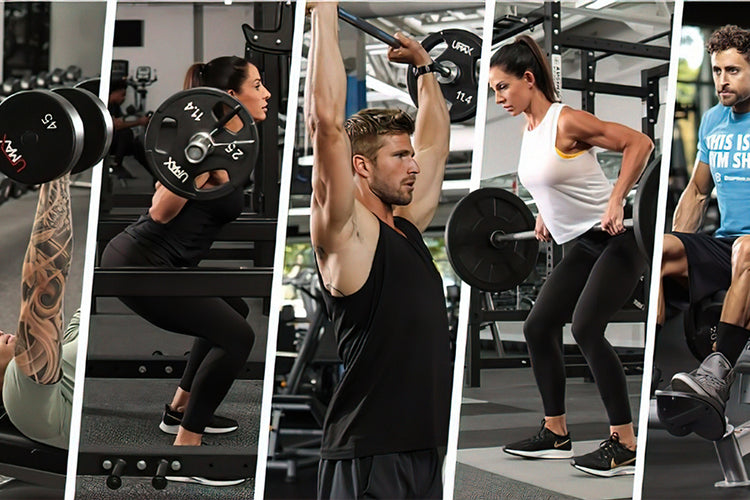
A full-body workout routine effectively achieves your health and fitness goals. It involves exercising all the major muscle groups in your body with various exercises that target different muscles.
A regular full-body workout routine will help you burn calories, build strength, and improve cardiovascular health. With the right plan and approach, you can create an effective full-body workout routine that works for you. Here are some tips to get you started.
Proper Form and Technique
Using proper form and technique when exercising is essential, but it is even more crucial when doing full-body workouts. This is because full-body workouts involve multiple muscle groups, and using the improper form can lead to injury. If you need help exercising correctly, ask a personal trainer or certified fitness instructor for help.
Gradual Progression and Overload
Once you have mastered the proper form and technique for the exercises in your full-body workout routine, you can gradually increase the intensity of your workouts.
This can be done by increasing your weight, the number of sets and reps, or the speed at which you perform the exercises. It is important to gradually increase the intensity of your workouts so that your body has time to adapt.
Incorporating Compound Exercises
Compound exercises are exercises that work for multiple muscle groups at the same time. These exercises are ideal for full-body workouts because they allow you to work more muscle in less time. Some examples of compound exercises include squats, deadlifts, bench presses, and pull-ups.
Balancing Pushing and Pulling Movements
Balancing pushing and pulling movements in your full-body workout routine is essential. This will help to prevent muscle imbalances and injuries. Pushing movements work the muscles in the front of your body, such as your chest and triceps.
Pulling movements work the muscles in the back of your body, such as your back and biceps. Some examples of pushing movements include bench presses, push-ups, and dips. Some examples of pulling movements include rows, pull-ups, and deadlifts.
Considering Time Constraints and Schedule
When creating a full-body workout routine, it is essential to consider your time constraints and schedule. If you are short on time, you can try a circuit workout. Circuit workouts involve doing a series of exercises one after the other, with little or no rest in between. This type of workout is a great way to get a full-body workout in a short amount of time.
Try working out at home if you have a busy schedule. There are many great workout videos and programs available online that you can follow. You can also try working out with a friend or family member. This helps keep you motivated and accountable.
No matter what your fitness level or schedule, there is a full-body workout routine that is right for you. Following these tips, you can create a routine to help you reach your fitness goals.
Related Article: The Only Beginner Bodybuilding Routine You Need to Start Building Muscle the Right Way
Creating a Workout Schedule
Creating a workout schedule for your full-body workout routine is essential to achieving the desired results. A good workout schedule will help you stay motivated and on track, ensuring each muscle group gets its proper share of attention during your routine.
Before creating a workout schedule, it is crucial to understand what exercises and workouts are best for targeting the various muscle groups. Knowing which exercises target which muscles can make planning your routine much easier. It can also help you choose the right weight and intensity levels so that you are challenging yourself without going too far outside of your
Weekly Workout Schedule Template
Here is a sample workout schedule template that you can use to create your own:
|
Day |
Muscle Group |
Exercises |
Sets |
Reps |
|||
|
Monday |
Chest |
3 |
10-12 |
||||
|
Tuesday |
Back |
3 |
10-12 |
||||
|
Wednesday |
Legs |
3 |
10-12 |
||||
|
Thursday |
Shoulders |
3 |
10-12 |
||||
|
Friday |
Arms |
3 |
10-12 |
||||
|
Saturday |
Rest |
||||||
|
Sunday |
Rest |
Alternating Exercises and Muscle Groups
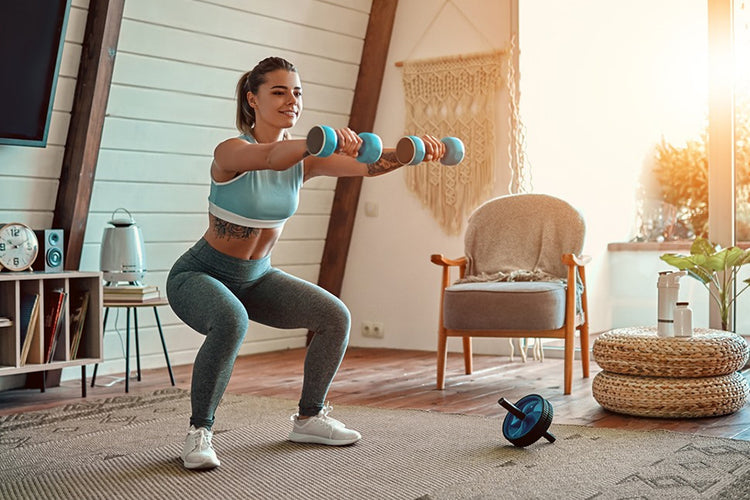
You can alternate exercises and muscle groups weekly to keep your workouts fresh and challenging. For example, you could do chest and triceps on Monday, back and biceps on Tuesday, legs and shoulders on Wednesday, and rest on Thursday.
Monitoring and Tracking Progress
It's essential to monitor and track your progress so that you can see how you're doing and make adjustments as needed. You can track your progress by keeping a workout journal, using a fitness tracker, or simply noting how you feel after each workout.
Here are some tips for creating a workout schedule that works for you:
- Start with a goal in mind. What are you hoping to achieve with your workouts?
- Choose exercises that you enjoy and that are appropriate for your fitness level.
- Start slowly and gradually increase the intensity of your workouts over time.
- Listen to your body and take rest days when you need them.
- Be patient and consistent with your workouts. It takes time to see results.
Safety Precautions and Considerations
Full-body workout routines can be a great way to stay in shape and improve your overall health. But it's essential to take certain safety precautions and considerations into account when beginning this type of exercise regimen. Now let’s discuss the necessary safety precautions and considerations for full-body workout routines so that you can perform these exercises safely and effectively.
Here are some safety precautions and considerations to remember when working out:
Consulting a Healthcare Professional
It is always a good idea to consult with a healthcare professional before starting any new exercise routine, especially if you have any health concerns. A healthcare professional can help you to create a workout routine that is safe and effective for you.
Listening to Your Body & Adjusting Accordingly
Listening to your body and adjusting your workout routine is essential. If you are feeling pain, stop the exercise and consult with a healthcare professional. It is also essential to take rest days when you need them.
Proper Nutrition and Hydration
Eating a healthy diet and drinking plenty of fluids when working out is essential. Eating a healthy diet will help you to have the energy you need to work out and recover from your workouts. Drinking plenty of fluids will help you to stay hydrated and prevent dehydration.
Consider incorporating supplements like DMoose whey protein to maintain an adequate protein intake for overall health. These supplements can support your well-being and aid in building muscle, allowing you to perform at a higher level. DMoose whey protein powder is formulated with high-quality proteins, namely whey protein concentrate and isolate.
These premium protein sources offer exceptional versatility, making them suitable for consumption during post-workout recovery and a pre-workout energy boost. These ingredients are known for their superior quality and effectiveness in supporting muscle recovery and providing the necessary nutrients for optimal performance.
Here are some additional safety precautions to remember when working out:
- Wear proper clothing and footwear.
- Warm up before your workout and cool down afterward.
- Use proper form and technique when performing exercises.
- Don't overdo it. Start slowly and gradually increase the intensity of your workouts over time.
- Listen to your body and take rest days when you need them.
- Be patient and consistent with your workouts. It takes time to see results.
Working out can be a great way to improve your health and fitness. Following these safety precautions can help ensure your workouts are safe and effective.
Related Article: Must-Read Workout Tips for Beginners
Conclusion
Designing the perfect full-body workout routine requires careful planning, consideration of individual goals and fitness levels, and a balanced approach to incorporating resistance training and cardiovascular exercises.
By assessing your fitness level, setting clear objectives, and structuring your workouts effectively, you can achieve optimal results and work towards a healthier, stronger, and more balanced body. Remember to start slowly, gradually increase the intensity, and allow for rest and recovery.
Consistency and dedication are essential to long-term success. So, whether you choose a full-body or split routine, focus on proper warm-up, stretching, resistance training, cardiovascular exercises, flexibility, and mobility exercises to create a well-rounded routine that suits your needs and helps you reach your fitness goals.
With the right mindset and determination, you'll be well on your way to transforming your body and enjoying the benefits of a comprehensive full-body workout routine.












